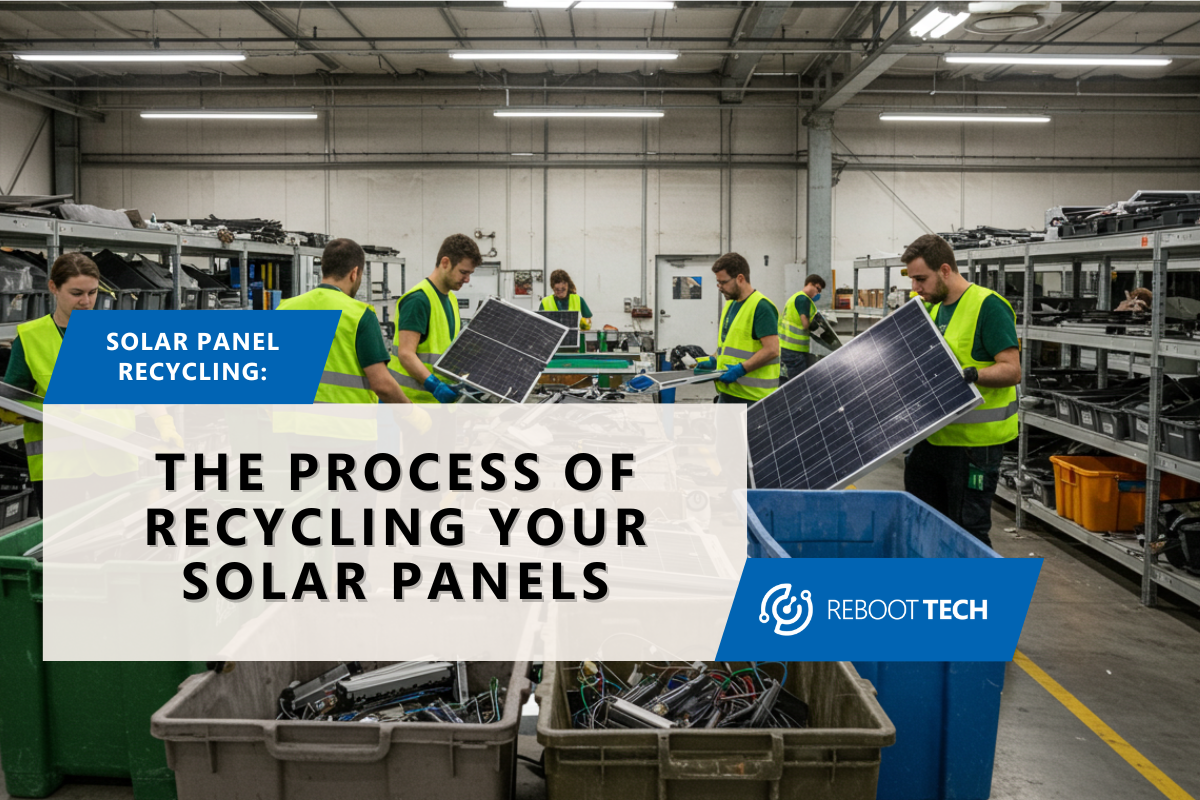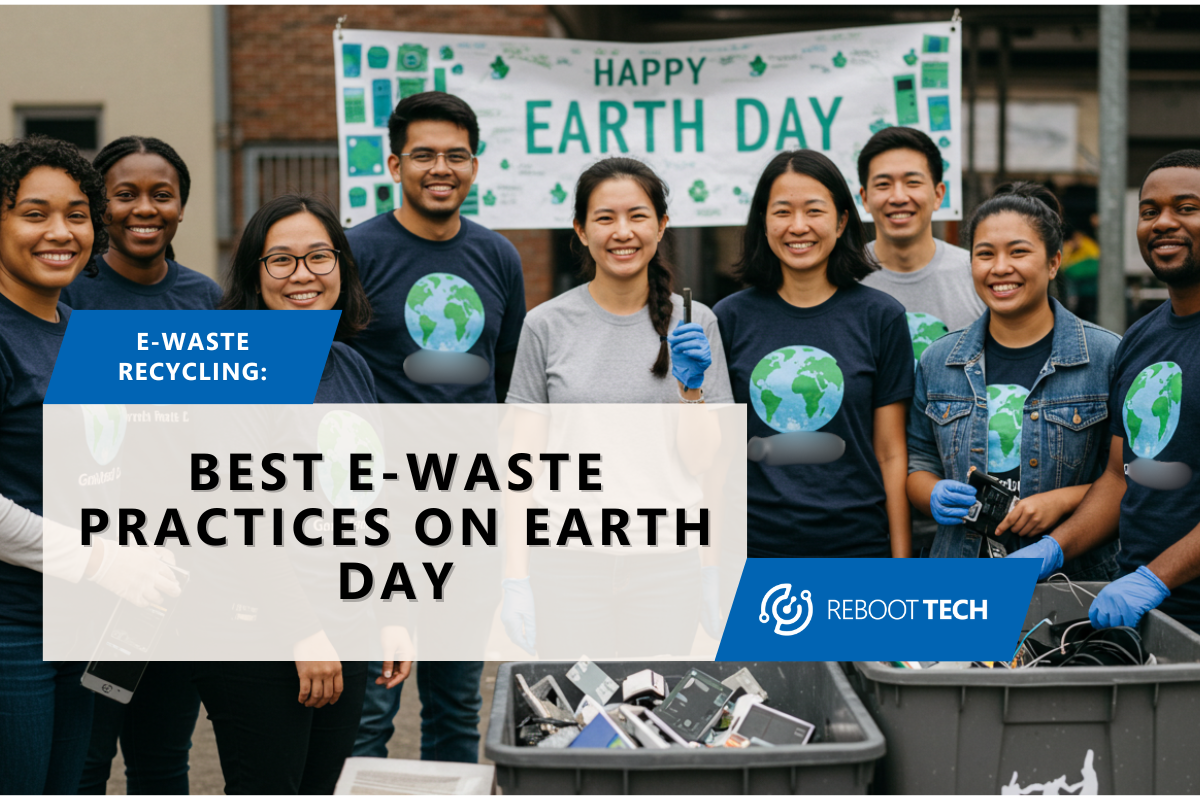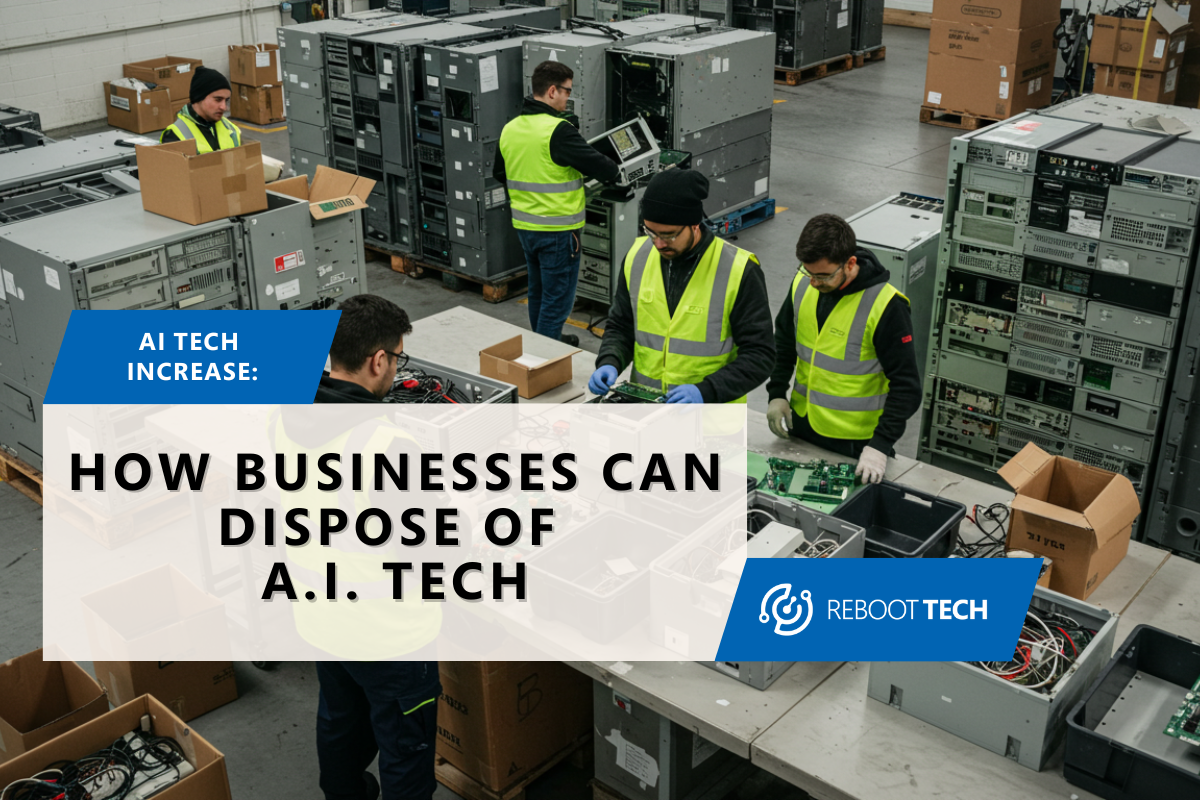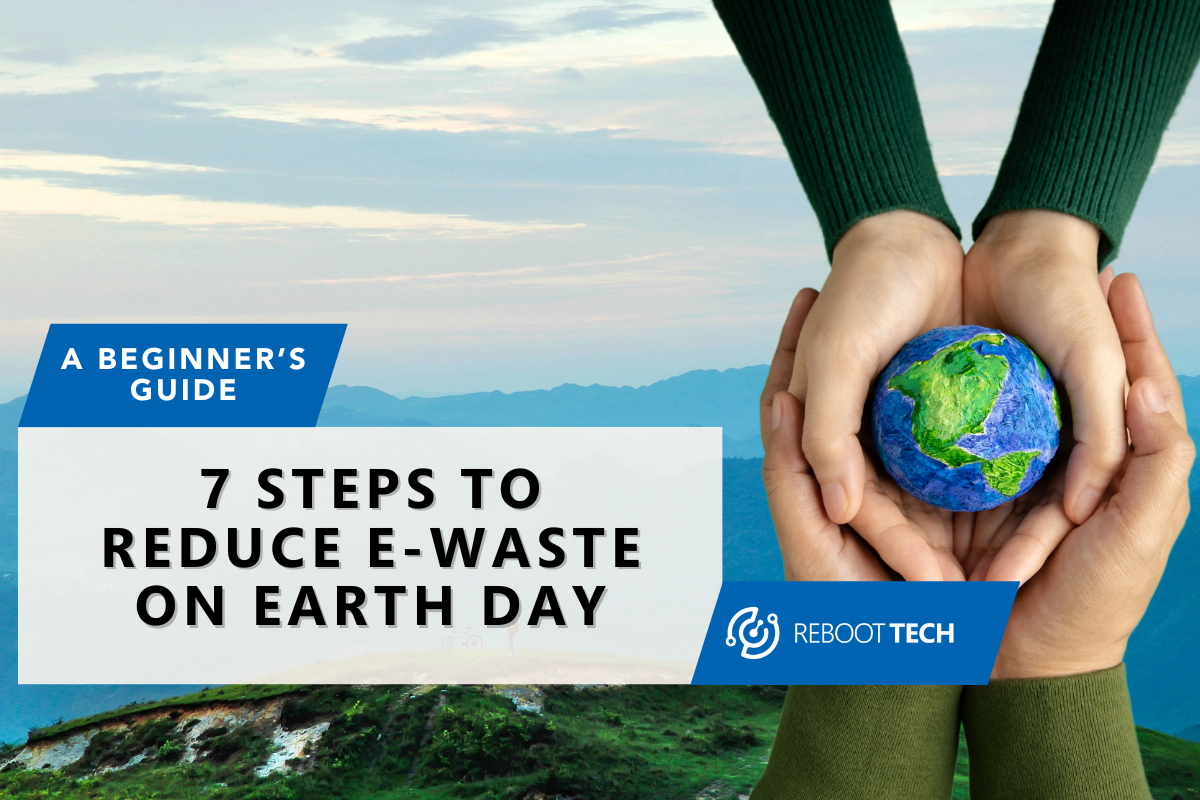
7 Steps to Reduce E-Waste on Earth Day
Unfortunately, every year, climate change becomes worse. According to an annual climate report by the National Oceanic and Atmospheric Administration (NOAA), our combined land and ocean temperature has increased at an average rate of 0.11 degrees Fahrenheit per decade since 1850.
Our point of no return will be in the year 2035, and if we act accordingly, we can delay that to 2042. According to the Paris Agreement, we need to keep Global warming to no more than 1.5 degrees Celsius, with emissions needing to be reduced by 45% by 2023 and to reach a net zero by 2050.

Many things contribute to this, but e-waste is the most popular, being our fastest-growing waste stream. If those numbers aren’t met in that time frame, it may be too late for us to do anything.
But, now that we got all that dread out of the way! What can each of us do protect our planet and slow down climate change? In honor of Earth Day 2024, we’ll explore 7 different ways we can reduce e-waste to protect our planet.
What is Earth Day?
Earth Day is an international event held each year on April 22nd to raise awareness about environmental issues and promote conservation efforts. This date was chosen to coincide with the spring equinox in the northern hemisphere, symbolizing the renewal of life and the Earth’s natural cycles. It originated in the United States in 1970 and has since become a global movement, inspiring millions of people to take action for the planet.

What is E-Waste?
E-waste refers to electronic products that have reached the end of their useful life or are no longer wanted. This includes items such as old computers, smartphones, televisions, and other electronic devices. E-waste is a growing problem worldwide due to the rapid pace of technological advancement and increasing consumer demand for electronic gadgets.
The Importance of Recycling
Reducing e-waste is essential for several reasons. First, electronic devices contain toxic materials such as lead, mercury, and cadmium, which can pose serious health and environmental risks if not disposed of properly.
These harmful chemicals can leak into our soil and water, which can kill off our wildlife, plants, and even humans. Additionally, e-waste contributes to pollution, resource depletion, and energy consumption.
By reducing e-waste, we can conserve natural resources, minimize pollution, and protect human health. But now that you know what E-waste is and why it’s so important, let’s get into 7 ways we can reduce it.
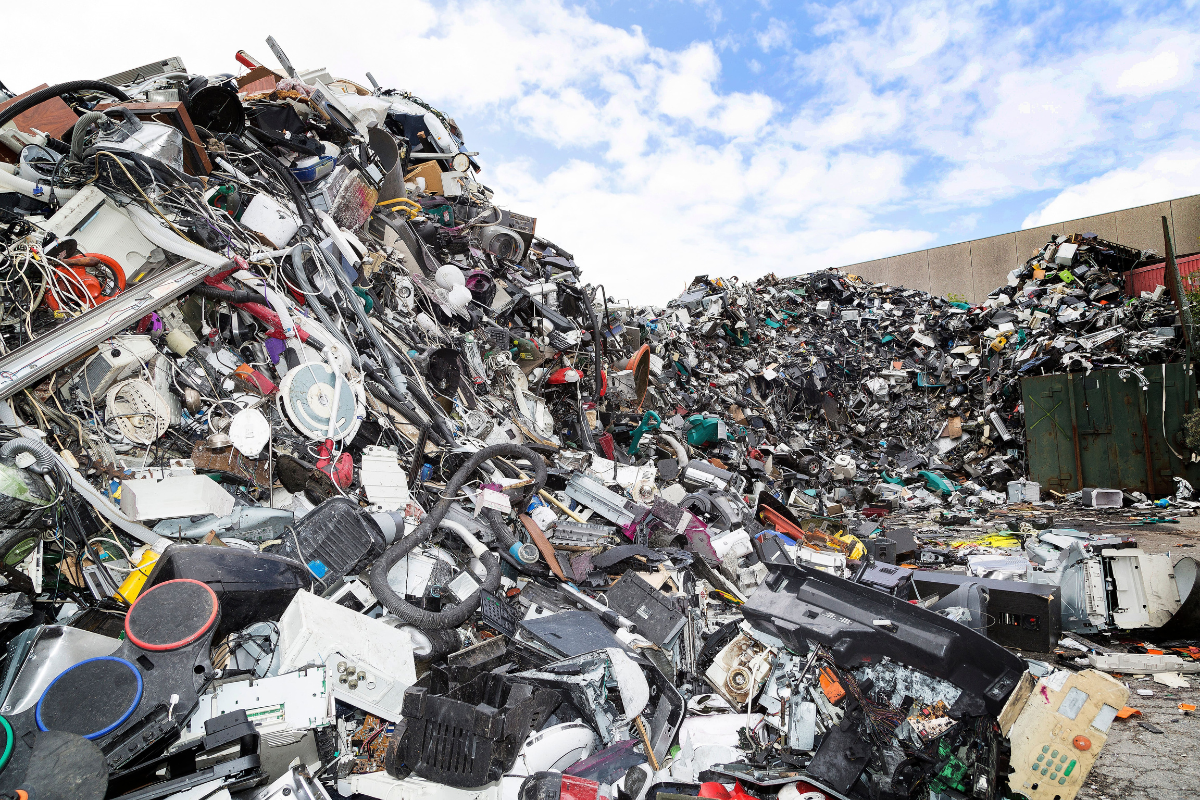
7 Ways to Reduce E-Waste
1. Recycling Electronics
Recycling old electronics is one of the most effective ways to reduce e-waste. Many electronic devices contain valuable materials that can be recovered and reused in the manufacturing of new products.
For instance, did you know that e-waste contains around 10,000g of gold/ton? Gold ore barely has 0.5 – 13.5g of gold/ton. Other materials include silver, copper, nickel, and palladium. These materials can be used to create new electronics instead of manufacturers needing to mine for more.
In 2022, the value of e-waste materials totaled around $15 billion. Yes, that’s right, a chunk of that money was simply thrown away. This is why we should look for certified e-waste recycling centers in your area and drop off your unwanted electronics for proper electronic waste recycling.
2. Donating or Selling Used Electronics
Now, if you don’t want to recycle your old electronics, you can simply donate them! Many charitable organizations accept them, such as the Salvation Army. These electronic components can be used by the less fortunate, giving them a second life.
This method prevents your electronics from piling up or ending up in landfills. However, there are some other pros and cons to this method that we’ll get into later.
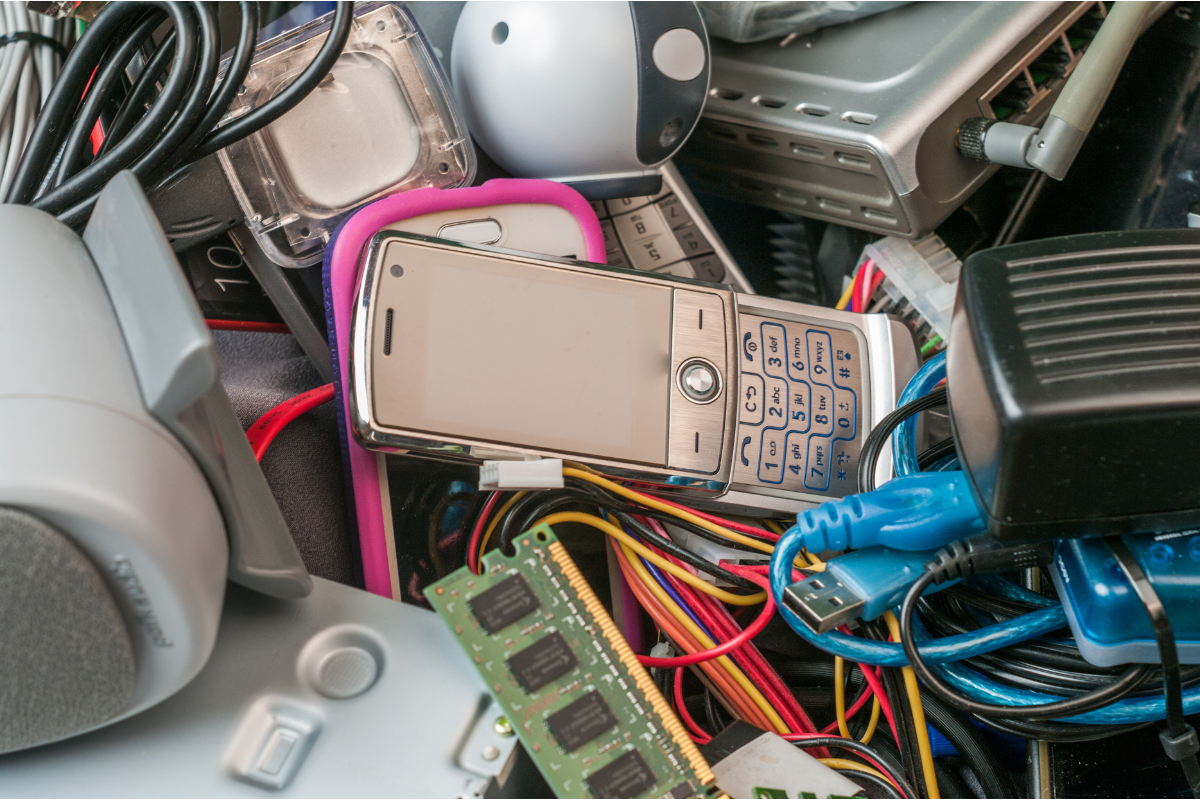
3. Working with A Certified E-Waste Recycling Company
This may be the simplest option for you if you have an electronic surplus. This is especially useful if you’re a business, and are looking to dispose of a lot of electronics and are prioritizing data security. Many businesses have sensitive information on their computers, and simply hitting “delete” on them before recycling isn’t enough.
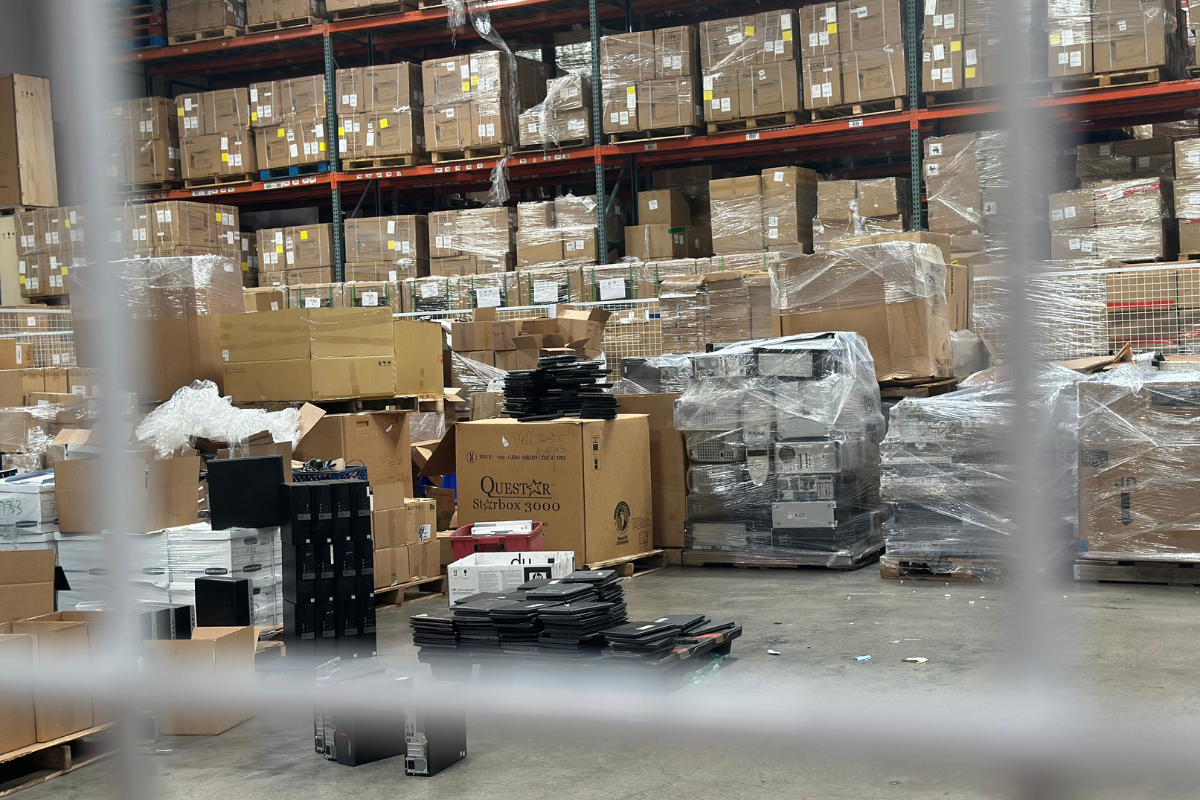
That information can still be accessed by hackers and third parties, so certified e-waste recyclers make sure that the data is completely destroyed using special methods. When you’re working with a place, make sure they have the necessary certifications such as the R2v3 and ISO certifications, which are the basic guidelines for the safe, sustainable recycling of e-waste.
For many other individuals looking to dispose of other electronics, it’s still a good idea to seek out certified e-waste recyclers that can handle all of that for you. While donating your used electronics to places like Goodwill can be a good idea, there are cases where your electronics should probably be recycled properly instead of being given away. When this happens, you should know what to look out for.
4. Extending the Lifespan of Electronics
Make an effort to extend the lifespan of your electronic devices by properly maintaining them and avoiding unnecessary upgrades. You can take very simple steps to keep them in good quality, which makes the need to buy new ones less necessary.
For example, an easy thing you can do that most phones feature is to limit the charge to 80%. Batteries degrade faster when it’s always getting fully charged, and many people end up having to get a new battery or upgrade their device because of simple things like this. Regular maintenance and software updates can help prolong the life of your electronics and reduce the need for replacements.
5. Using Sustainable ITAD Practices
This is another good step if you’re a business of any size. When you’re looking to recycle your electronics, some companies you work with might also offer IT Asset Disposition services. This is a service to responsibly dispose of your old and outdated equipment. It follows the electronics throughout its entire life cycle, ensuring proper tracking of the electronics.
This method specializes in protecting your IT assets to make sure that your old data is secure and will not be accessed by hackers. Many businesses rely on IT assets to have their business function properly, so finding a company like Reboot Tech, that does e-waste recycling, ITAD, and data destruction is very important. So, not only does this method significantly help out the environment, but helps your business stay secure and compliant and saves money.
6. Supporting Legislation and Policies
The next way is also quite simple, and that’s to use your voice! Social media is a very popular way to advocate for change because it takes basically no effort. All you have to do is go on your phone and speak your mind about topics that you care about.
This may not seem like it does much, but when we all advocate for change, then good things will happen. There are already many legislations in place such as California’s Senate Bill 20, but we need stricter guidelines because e-waste is growing way too quickly.
In 2023, the world generated 61.3 million metric tons of e-waste. In 2020, we generated 55.5 million metric tons. This number has been going up consistently and it’s not going to stop unless we make a big difference. Let’s encourage lawmakers to implement measures that fix our waste problems, such as extended producer responsibility (EPR) programs and mandatory recycling requirements.

7. Educating Others About E-Waste Reduction
This last method is pretty similar in that it’s also very simple such as simply going on social media and advocating for change. You’d be surprised how much of a difference you can make by posting an Instagram story every now and then about e-waste. A friend who trusts your opinion could view it, and suddenly, we have another person who also cares about making a difference in the environment.
The cycle repeats, and people will start educating themselves. If we spread awareness about the importance of e-waste reduction and encourage others to adopt sustainable practices, we can make a big difference.
Making Every Day Earth Day

While Earth Day is a nice reminder to care for our environment, we can’t just stop at Earth Day. Don’t take what you learned here or anywhere else today, and wait until next year to care about it again. These topics exist as friendly reminders that our Earth is precious and is in danger of climate change.
If we simply take small steps to reduce our e-waste, it can make a difference that will change our world. By following these seven simple steps, individuals can make a meaningful difference and contribute to a healthier planet for future generations.


